
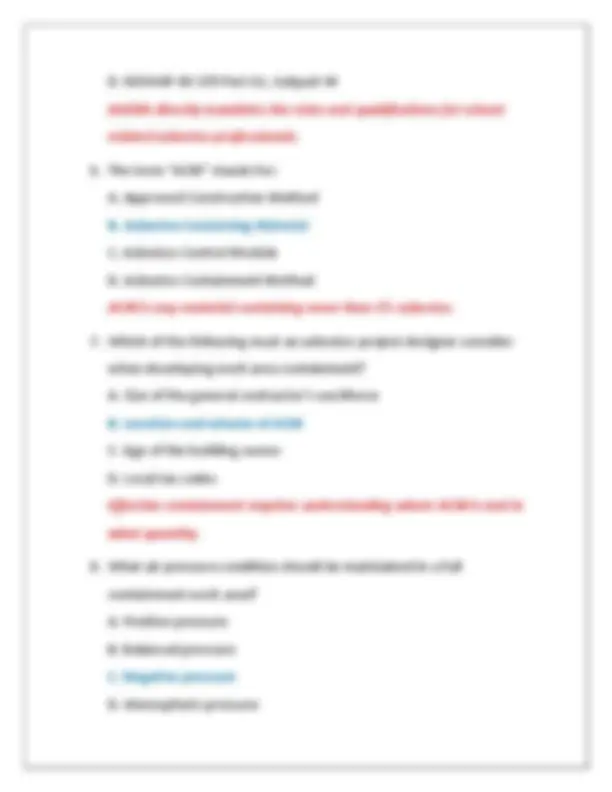
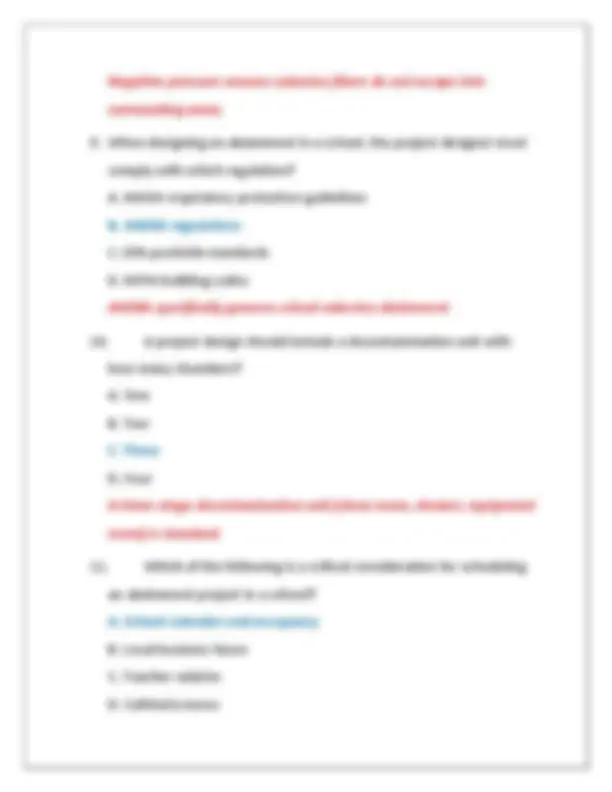
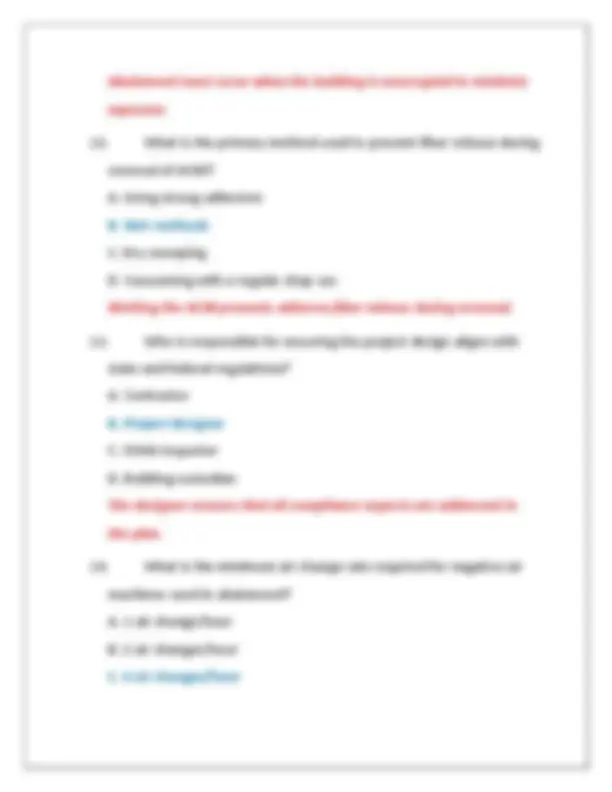
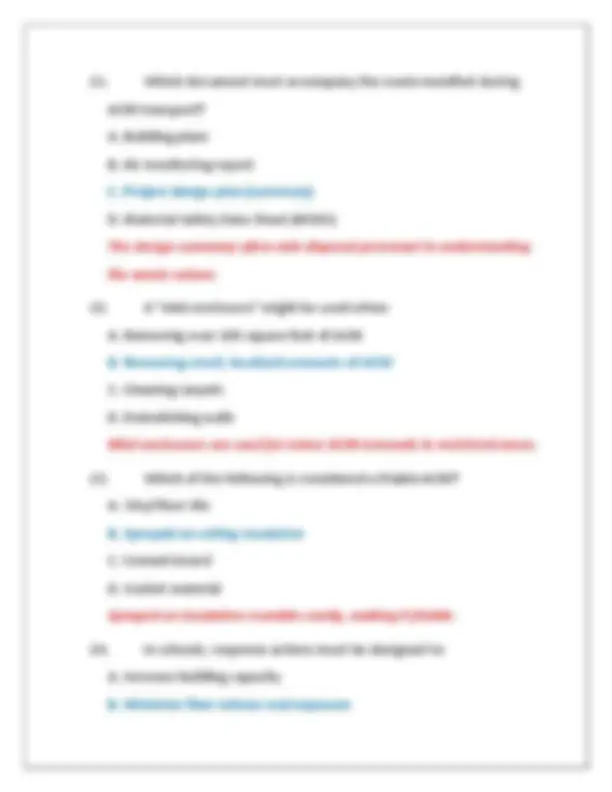
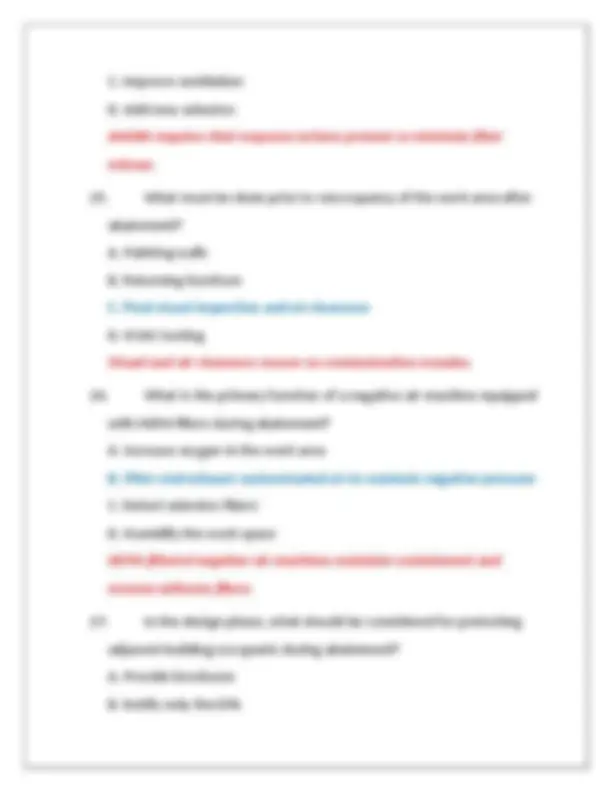
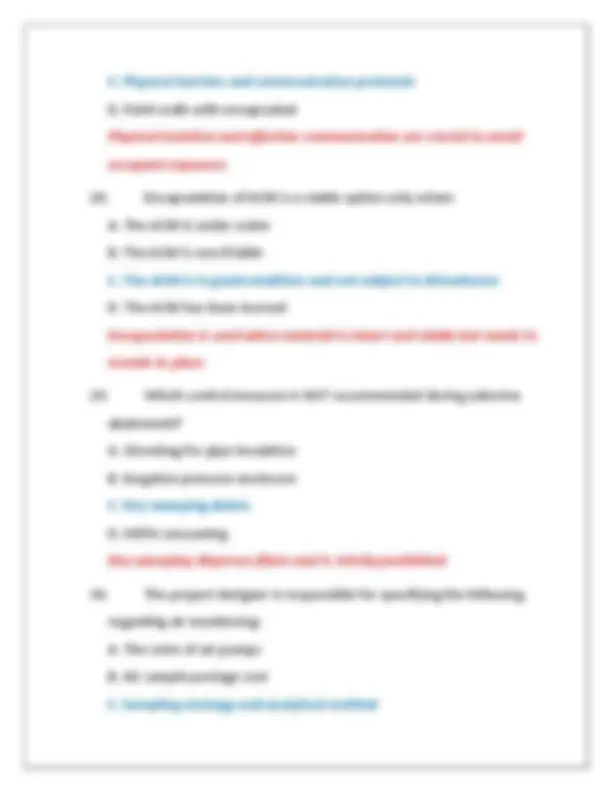
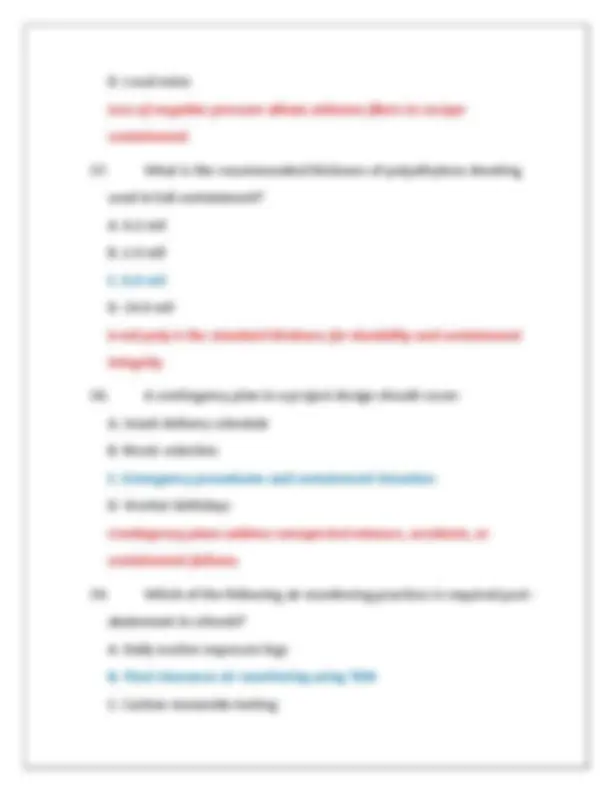
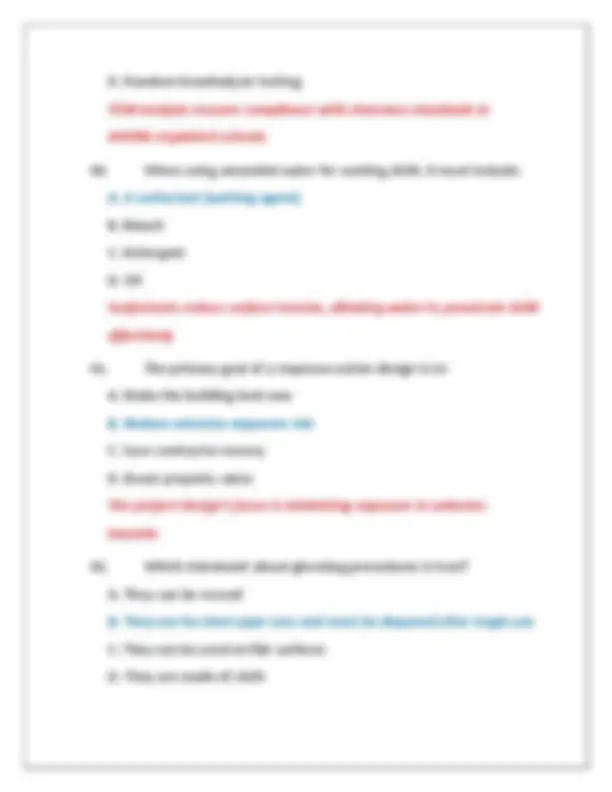
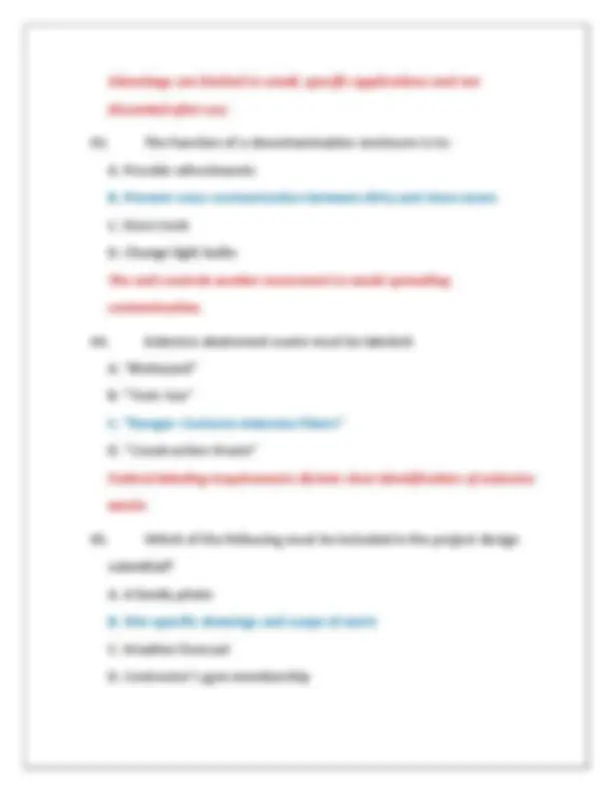
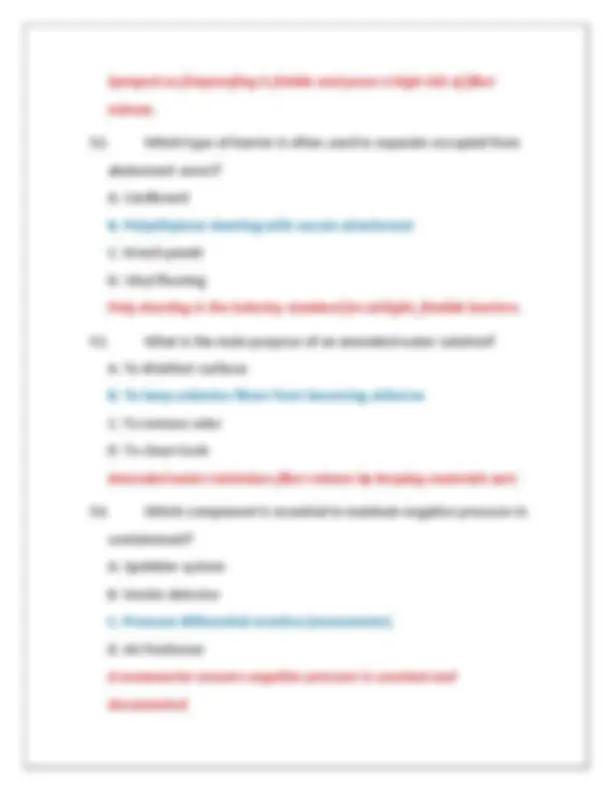
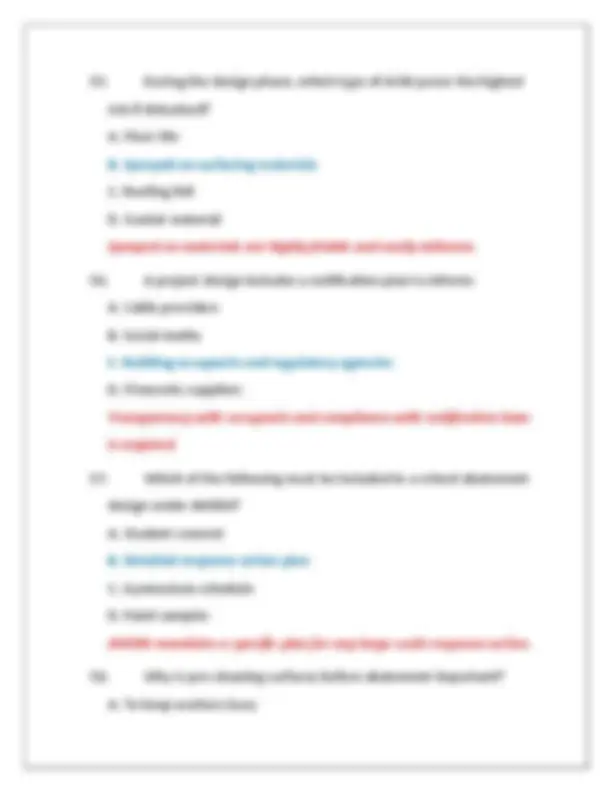
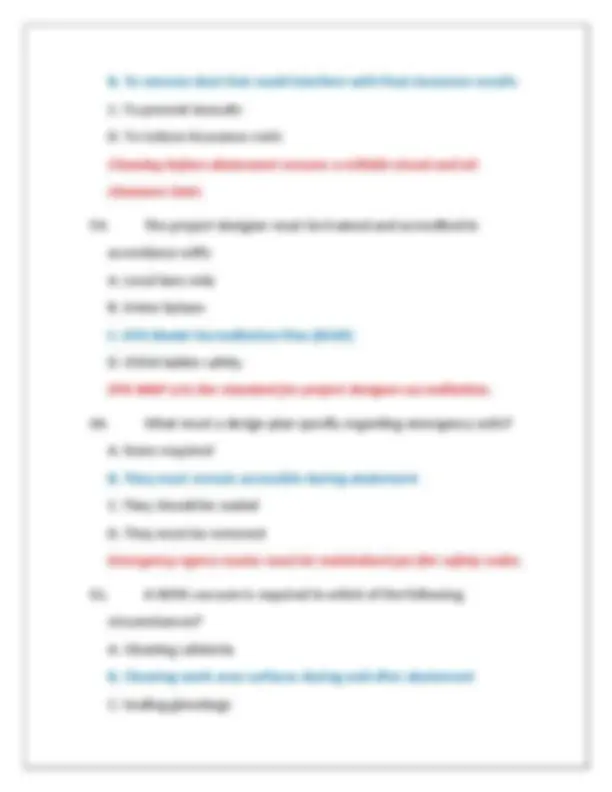
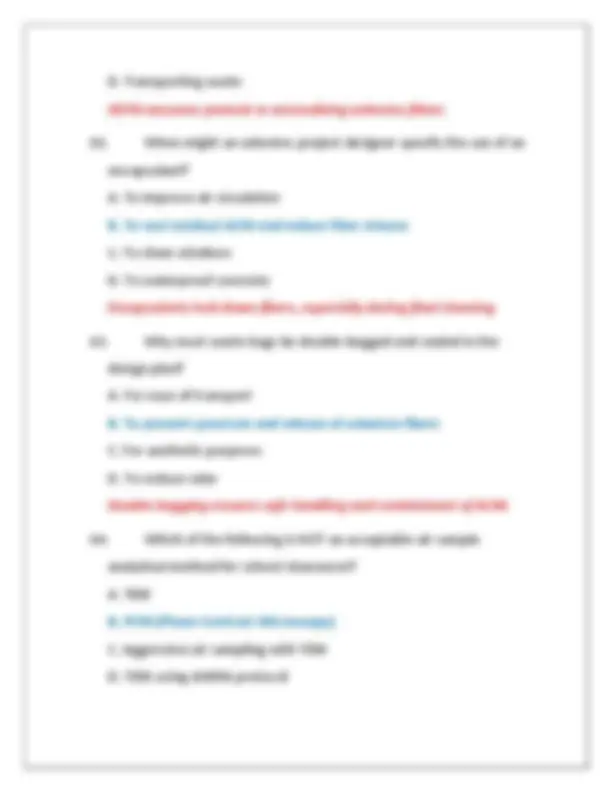
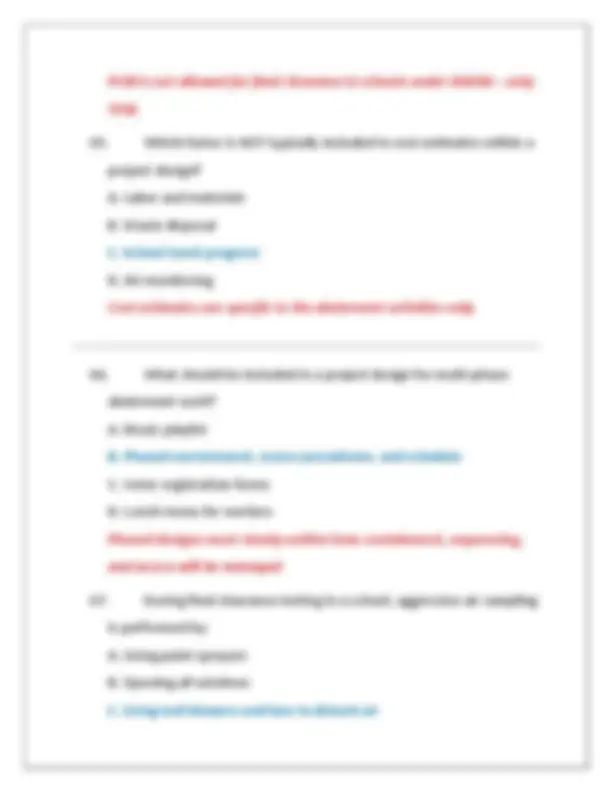
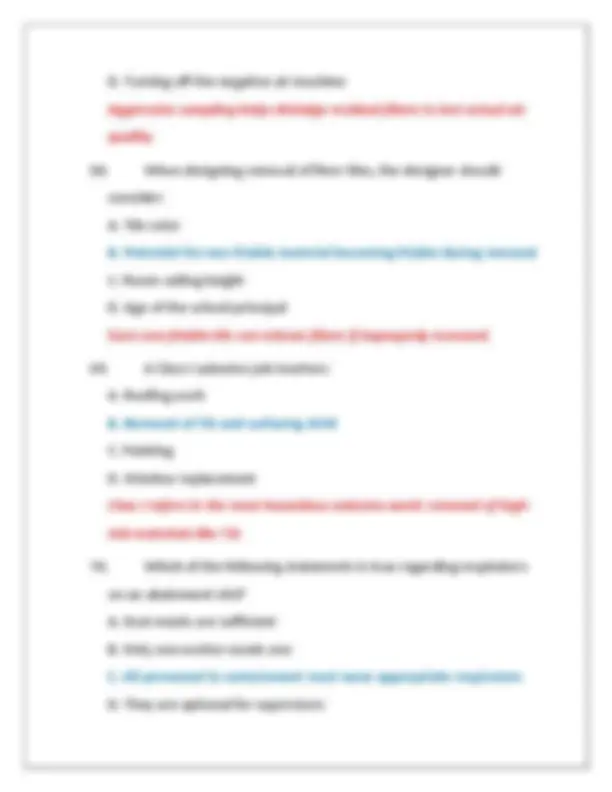
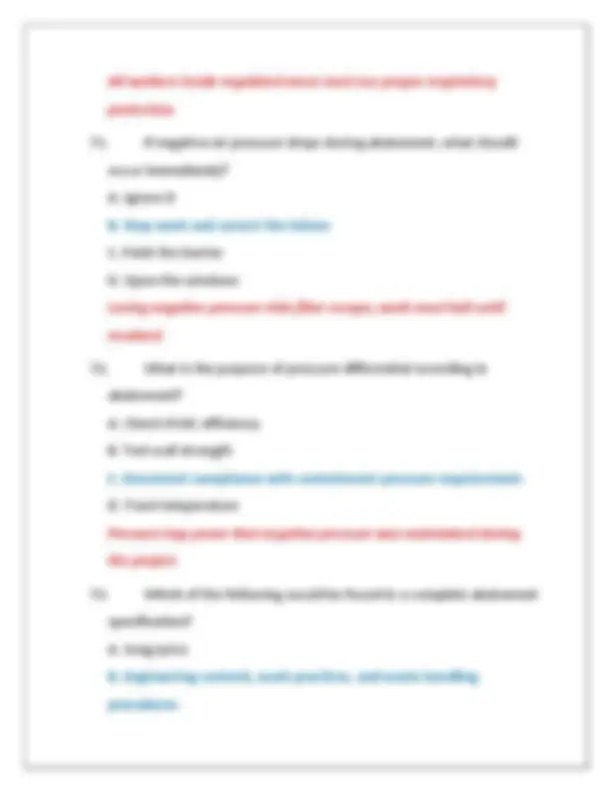
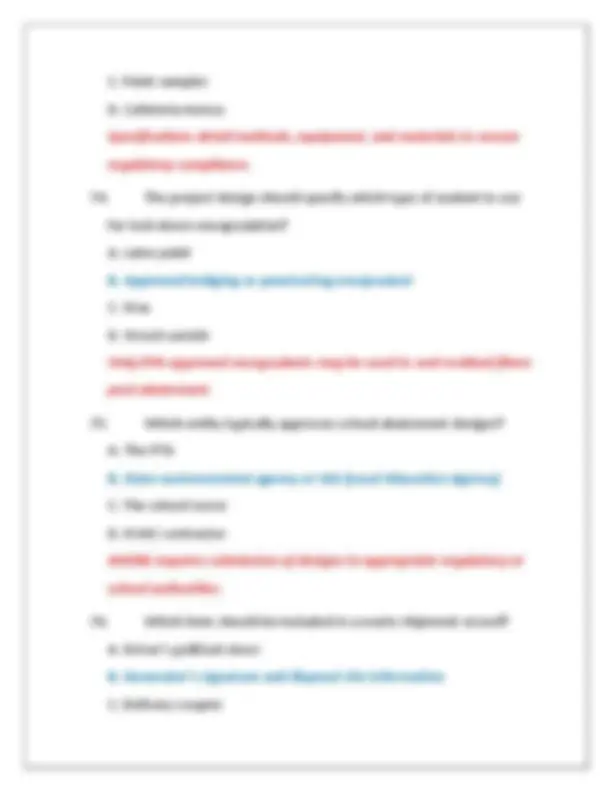
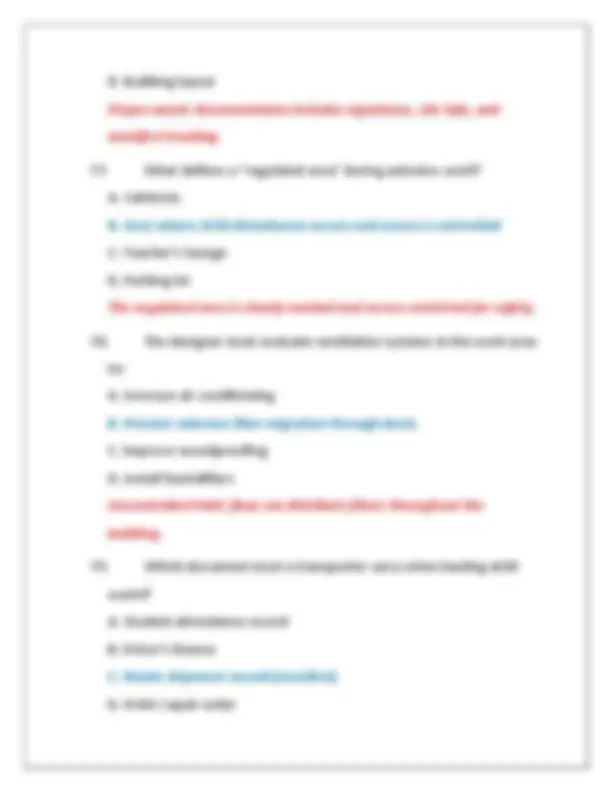
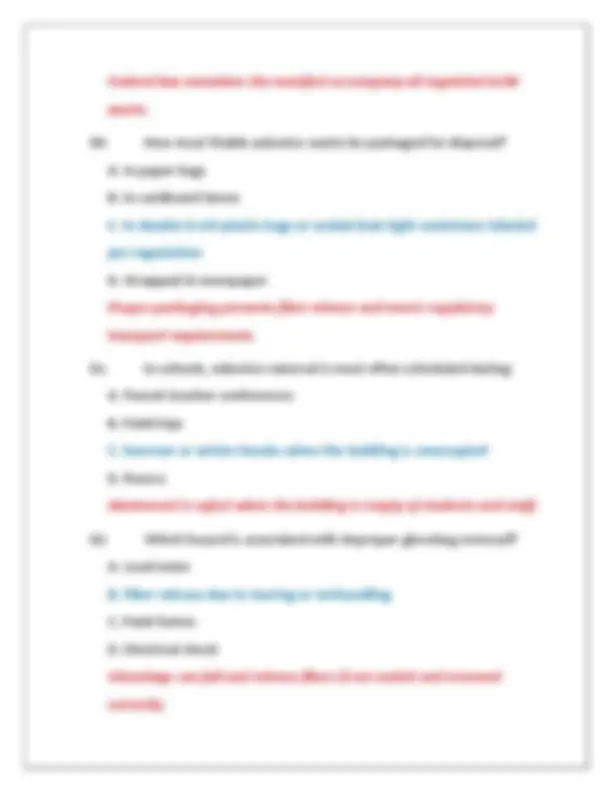
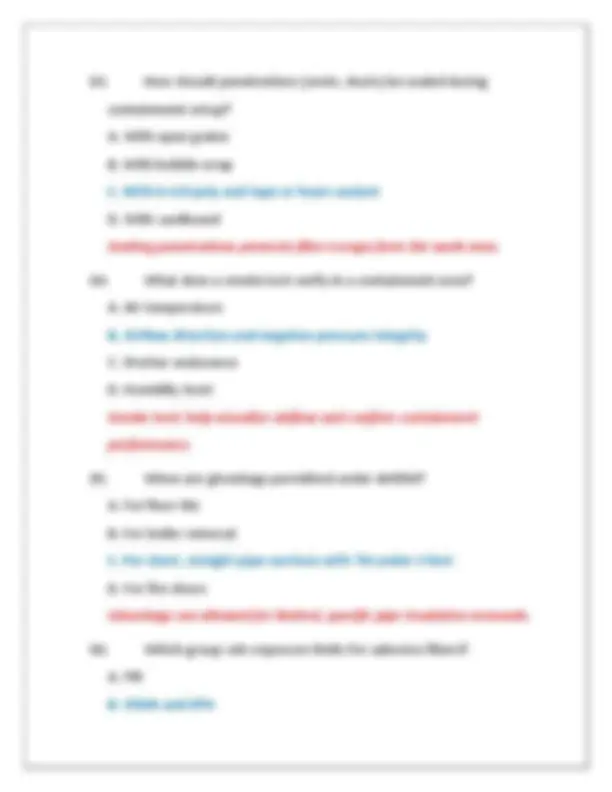
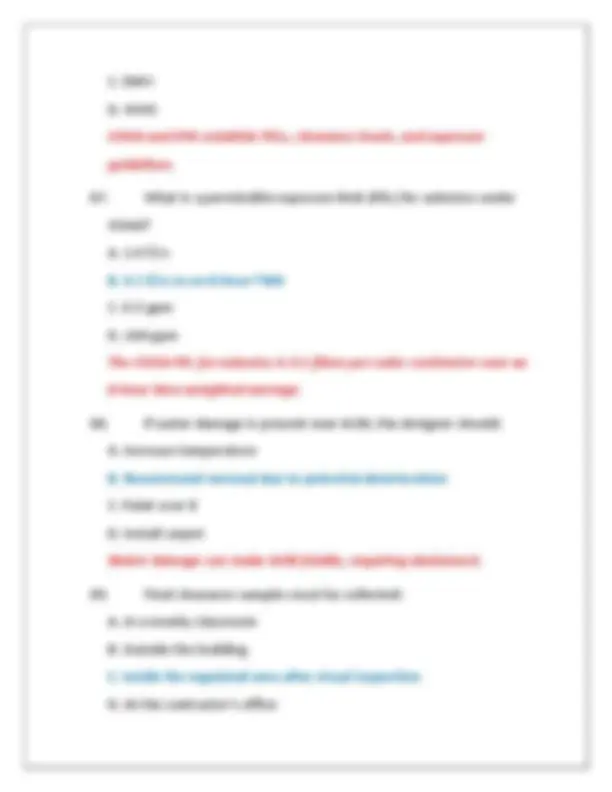
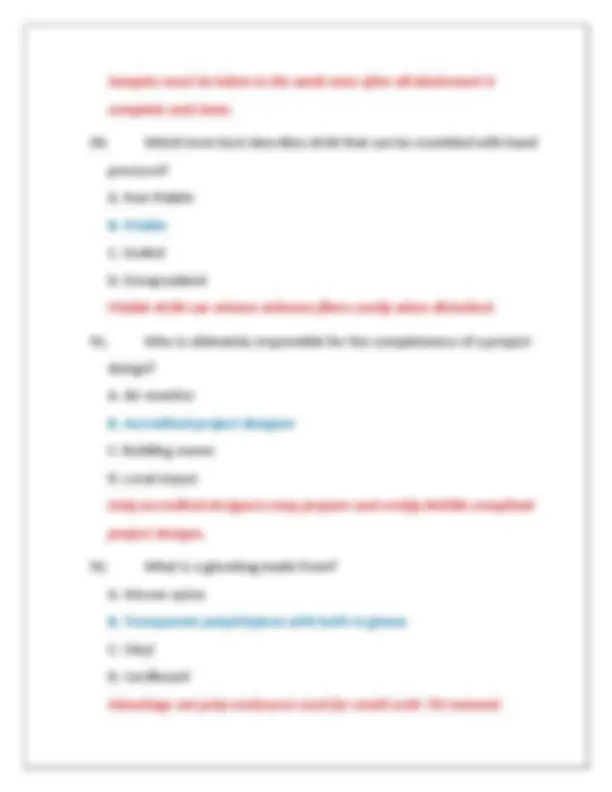
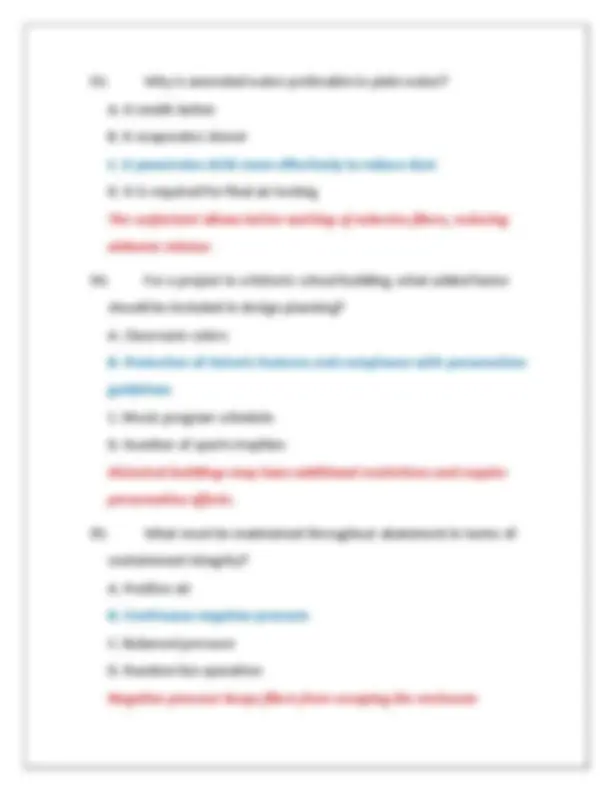
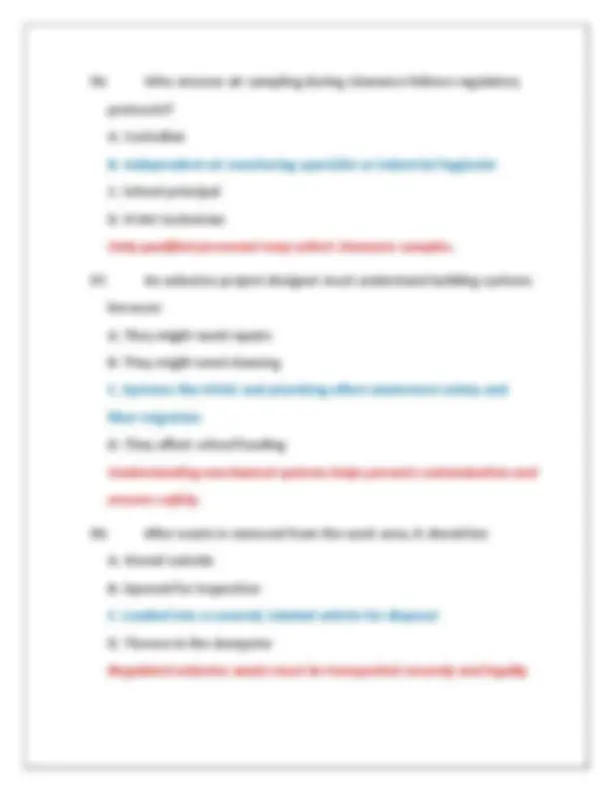
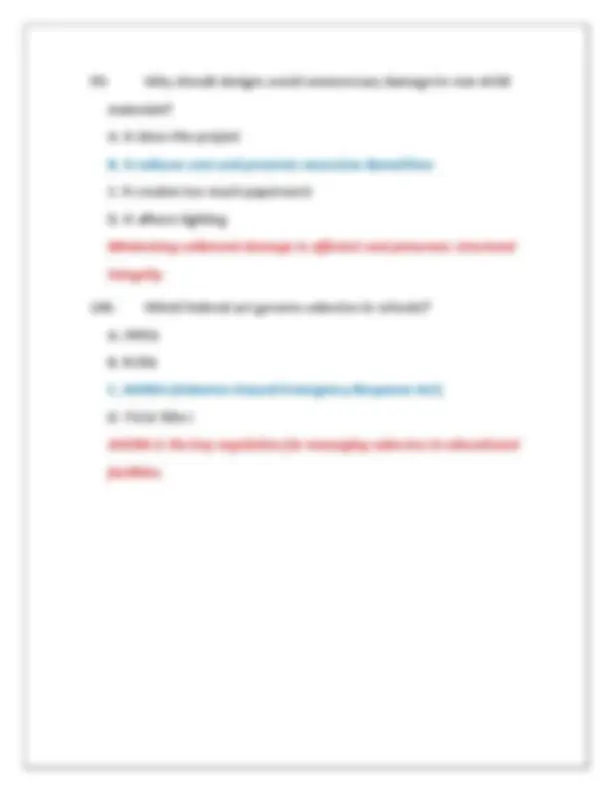


Study with the several resources on Docsity

Earn points by helping other students or get them with a premium plan


Prepare for your exams
Study with the several resources on Docsity

Earn points to download
Earn points by helping other students or get them with a premium plan
Community
Ask the community for help and clear up your study doubts
Discover the best universities in your country according to Docsity users
Free resources
Download our free guides on studying techniques, anxiety management strategies, and thesis advice from Docsity tutors
ASBESTOS PROJECT DESIGNER PRACTICE EXAM 1 QUESTIONS AND CORRECT ANSWERS (VERIFIED ANSWERS) PLUS RATIONALES 2025 Q&A | INSTANT DOWNLOAD PDF
Typology: Exams
1 / 33

This page cannot be seen from the preview
Don't miss anything!


























D. Worker protection protocols Energy efficiency is unrelated to asbestos abatement planning.
Negative pressure ensures asbestos fibers do not escape into surrounding areas.
Abatement must occur when the building is unoccupied to minimize exposure.
C. Physical barriers and communication protocols D. Paint walls with encapsulant Physical isolation and effective communication are crucial to avoid occupant exposure.
D. Name of lab custodian Designers must define sampling locations, timing, and analysis (e.g., PCM or TEM).
D. Loud noise Loss of negative pressure allows airborne fibers to escape containment.
D. Random breathalyzer testing TEM analysis ensures compliance with clearance standards in AHERA-regulated schools.
Site drawings and specific scope ensure the plan is tailored to the exact project.
Asbestos fibers cause serious chronic respiratory diseases and cancers.
B. To remove dust that could interfere with final clearance results C. To prevent lawsuits D. To reduce insurance costs Cleaning before abatement ensures a reliable visual and air clearance later.